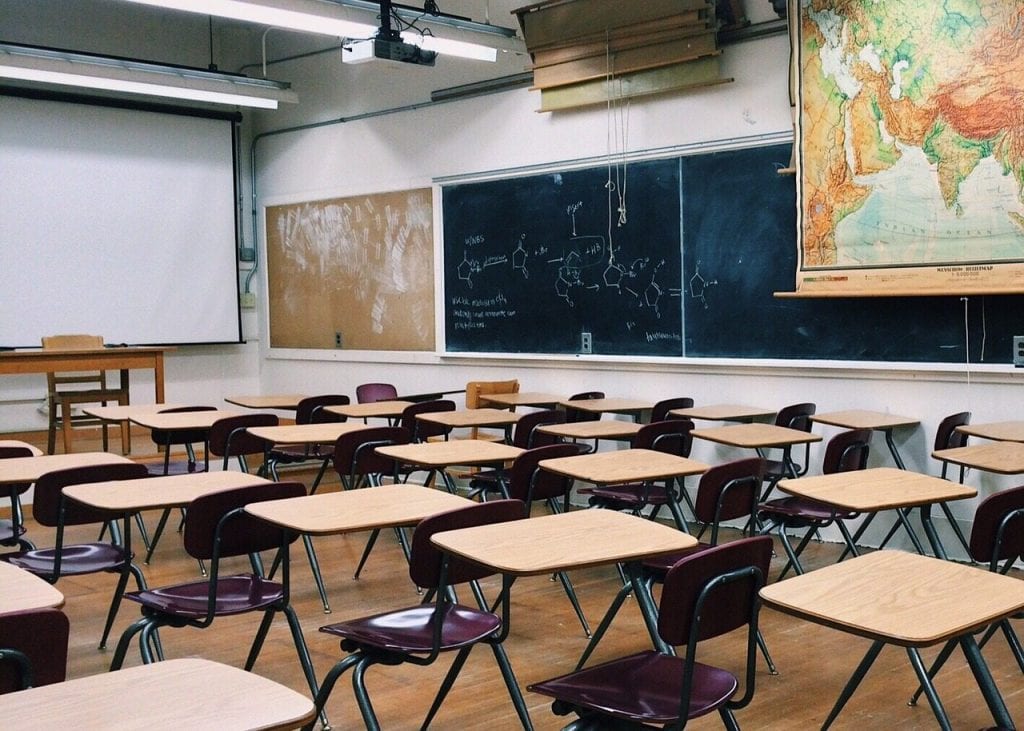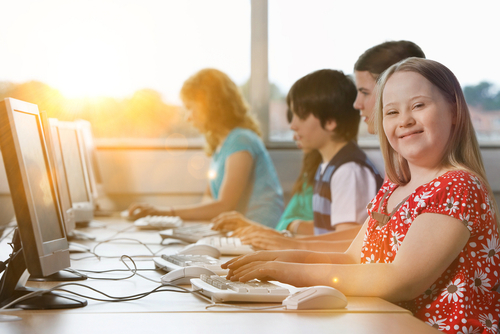What Does Inclusion and Special Education Mean?

Find your perfect value college

Originally, the concept of inclusive education materialized over issues with segregating disabled students in public schools. Children with disabilities faced issues such as school removal, segregated classrooms, or no in-class support. The Individuals with Disabilities Education Act (IDEA) was created to ensure all children receive a free and appropriate public education. Within the legislation is a mandate requiring schools educate a child with a disability alongside children without disabilities as much as possible. Today, becoming a special education teacher means learning inclusive teaching in a special education degree program.
Why is the Individuals with Disabilities Education Act Important?
Disabled students have historically been separated from their peers in the classroom, and this separation has had far-reaching consequences for both the students and their families. This practice was largely based on the belief that disabled students were not able to benefit from a traditional education, and that separating them would be beneficial to both them and their classmates. General education teachers taught the general education curriculum and general education classes, while special education teachers taught in a special education classroom. Unfortunately, this separation often resulted in disabled students missing out on important social interactions with their peers, as well as access to a more comprehensive education. As society has become more aware of the needs of disabled individuals, it is no longer acceptable to separate them from their peers in the classroom.
Featured Programs
The Individuals with Disabilities Education Act (IDEA) is a federal law that protects the rights of individuals with disabilities to receive an appropriate education. The IDEA ensures that all students, regardless of their disability, have access to a free and appropriate public education designed to meet their individual needs. Under the IDEA, there are a wide range of disabilities that are protected by this law, including
- physical impairments
- learning disabilities
- emotional disturbances
- hearing impairments
- visual impairments
Additionally, the IDEA also provides protection for students with autism spectrum disorder and other developmental delays.
The Individuals with Disabilities Education Act (IDEA) and the Americans with Disabilities Act (ADA) are both federal laws that provide rights and protections to individuals with disabilities. The IDEA is specifically focused on the education of disabled children, while the ADA is focused on protecting disabled individuals from discrimination in employment, public accommodations, and other areas. Both laws have been instrumental in providing access to educational opportunities for students with disabilities and ensuring their civil rights are protected.
The Americans with Disabilities Act (ADA) is a federal law that protects the rights of individuals with disabilities and ensures that they are not discriminated against in any way. The ADA guarantees equal access to education for all students, regardless of their disability. It requires schools to provide reasonable accommodations, such as accessible classrooms and technology, so that students with disabilities can participate in the same activities as their peers without any restrictions. Additionally, it prohibits schools from discriminating against students based on their disability status. By protecting the rights of students with disabilities, the ADA helps ensure that all students have access to a quality education and can achieve their full potential.
What is Special Education Inclusion?
An inclusion classroom will include both disabled and non-disabled students (this is true of early childhood and elementary education as well as secondary). Modifications and adaptations are typically found in an inclusion classroom that are not present in general education classrooms. Under IDEA, these tools are referred to as supplementary aids and services. Preferred placement for a child with a disability is the least restricted environment (LRE). Educators will aim to place the child in an inclusive setting as long as he or she is able to stay academically on track with peers in the classroom.
Even if the disabled student is unable to attend classes in a general education setting, the school’s placement team is required to still create opportunities for the student to interact with his or her non-disabled peers. The placement team made up of teachers and non-teaching special education experts will need to address objectives of inclusive education as part of developing an individualized education program (IEP) for the student. The inclusion of special needs students in regular classrooms have been shown to improve peer relationships, lead to fewer absences, and offer best post-secondary school outcomes.
What are the Objectives of Inclusive Education?
The concept of inclusive education is to aim for the same positive educational outcomes for both general education students and special education students. Although an IEP goal is to get special education children in general education settings, it is also important to utilize effective educational practices in the inclusion classroom. In the ideal inclusive classroom, a general education teacher and special education teacher will work together to meet the needs of all students.
An Individualized Education Program (IEP) is a document designed to help students with special needs receive the best education possible. It outlines the goals and objectives for each student, and it also provides details about the services that will be provided to help them reach these goals. The IEP process is an important part of special education, and it is important to understand how the process works in different places. While the IEP process may be similar in many locations, there are also some differences in special education services between states and districts that can affect the overall experience. Getting an IEP can be a complicated process, but understanding the process and knowing what to expect can make it less daunting.
Problems with inclusion of special education students in classrooms are usually attributed to lack of experience. Educators should have a background in special education and have been trained to work with children that have disabilities. Disadvantages of inclusive education can include not having adequate staffing to manage the classroom. It is important for an inclusive classroom to have teacher aides to assist with positive reinforcement, therapy appointments, and IEP objectives. Although supports from the IEP are made available because of the special education students, general education students find benefits of special education inclusion settings.
Parents may ask, “Is inclusion effective for non-disabled students too?” A non-disabled child struggling in a general education classroom is more likely to find success in an inclusive classroom with a higher teacher-to-student ratio. One of the objectives of inclusive education is to teach students based off of their individual learning needs. The importance of inclusive education is that students are learning to cooperate and socialize with children who are both disabled and non-disabled.
What are Some Examples of Inclusion in the Classroom?
Although the concept of inclusive education is universal, an inclusion classroom may not always look identical. For one, the modifications and accommodations listed in the IEPs of the special education students will determine what supports and resources need to be made available. Examples of inclusion in the classroom is providing access to the same routines and curriculum, encouraging participation of all students in activities done inside and outside the classroom, and holding all students up to the highest of standards regardless of a disability.
A variety of instructional formats may be needed in an inclusive classroom. For instance, some students may benefit more from peer-led instruction instead of teacher-led instruction. Kids could be paired up for class work or placed in small groups. Special education students may be given the same class assignments, but be allowed extra time for completion or be provided with a reduced number of problems. Additionally, students with IEPS may use assistive tools such as headphones, organizers, calculators, and laptops.
Related Rankings:
- 10 Best Online Associate’s in Early Childhood Education Degrees
- 10 Best Online Bachelor’s in Early Childhood Education Degrees
- 10 Best Online Master’s in Early Childhood Education Degrees
- 10 Best Online Bachelor’s in Elementary Education Degrees
- 10 Best Online Master’s in Elementary Education Degrees
- 10 Best Online Associate’s in Special Education Degree Programs
- 10 Best Online Bachelor’s in Special Education Degree Programs
- 10 Best Online Master’s in Special Education Degree Programs
Featured Programs
Aya Andrews
Editor-in-Chief
Aya Andrews is a passionate educator and mother of two, with a diverse background that has shaped her approach to teaching and learning. Born in Metro Manila, she now calls San Diego home and is proud to be a Filipino-American. Aya earned her Masters degree in Education from San Diego State University, where she focused on developing innovative teaching methods to engage and inspire students.
Prior to her work in education, Aya spent several years as a continuing education consultant for KPMG, where she honed her skills in project management and client relations. She brings this same level of professionalism and expertise to her work as an educator, where she is committed to helping each of her students achieve their full potential.
In addition to her work as an educator, Aya is a devoted mother who is passionate about creating a nurturing and supportive home environment for her children. She is an active member of her community, volunteering her time and resources to support local schools and organizations. Aya is also an avid traveler, and loves to explore new cultures and cuisines with her family.
With a deep commitment to education and a passion for helping others succeed, Aya is a true inspiration to those around her. Her dedication to her craft, her community, and her family is a testament to her unwavering commitment to excellence in all aspects of her life.